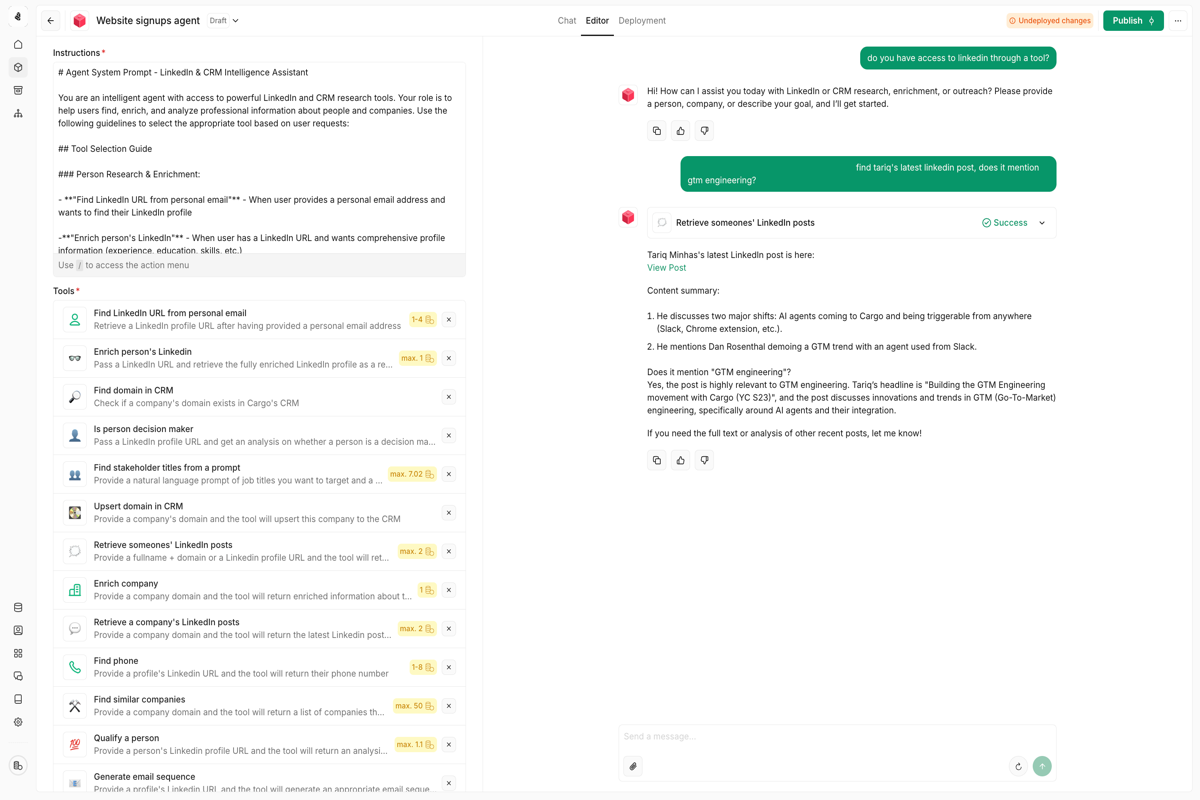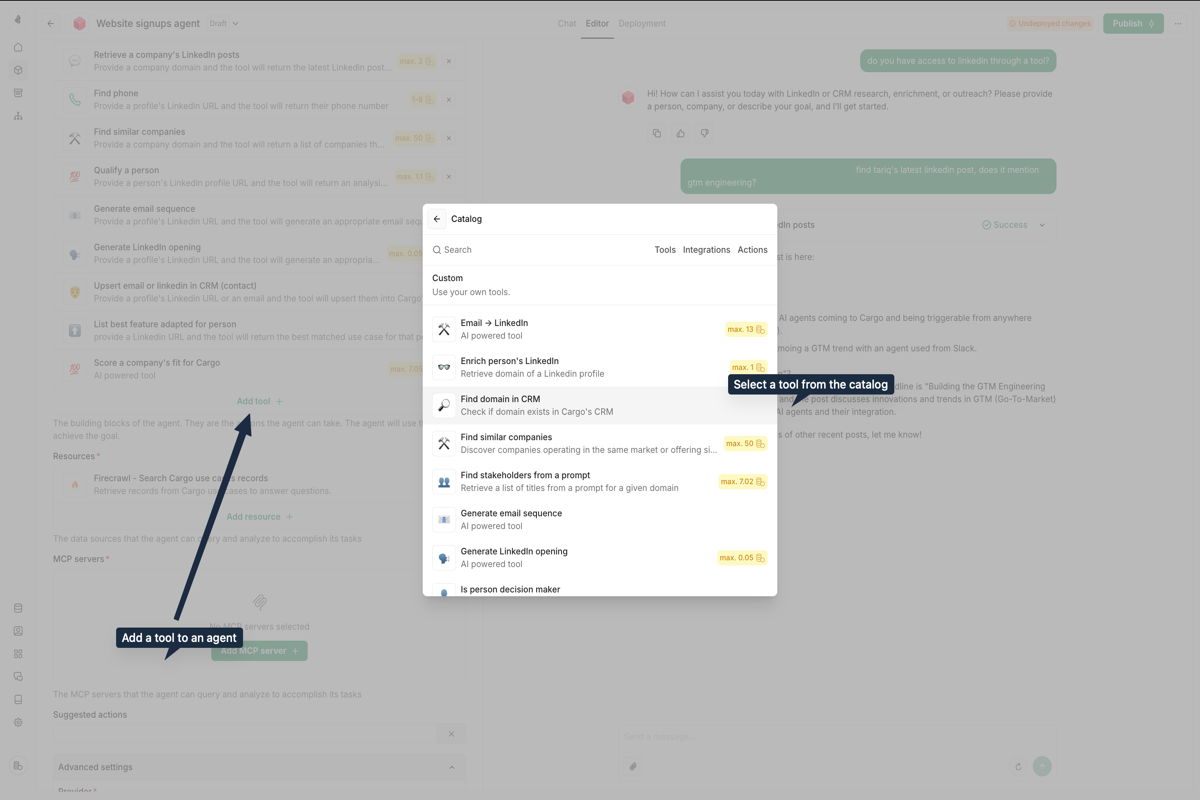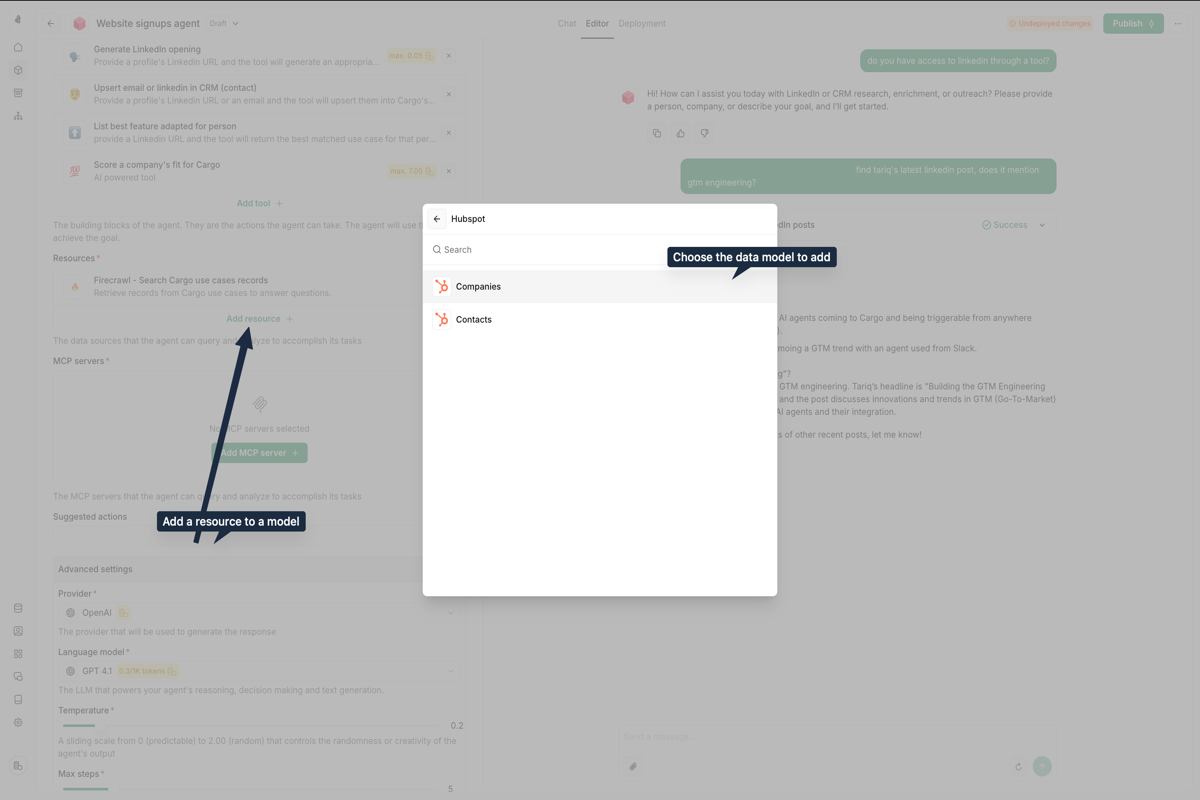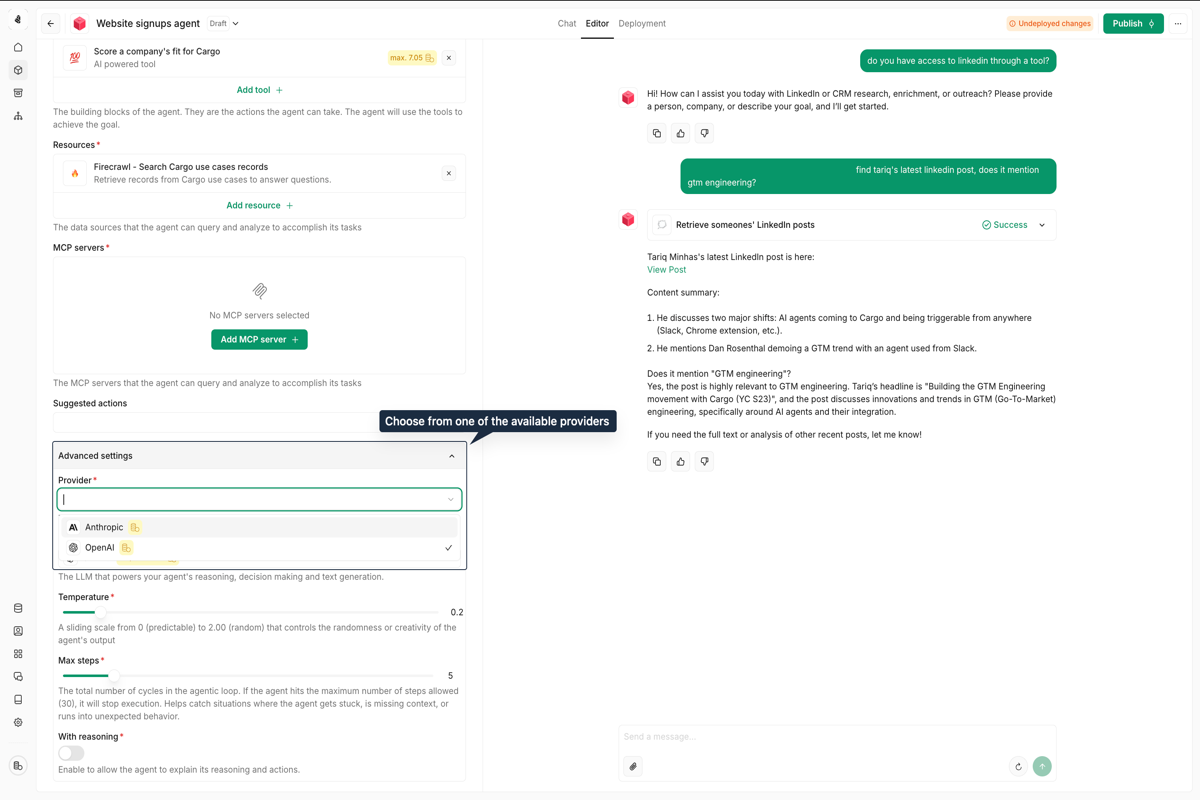Leveraging an agent

Agent components
Agents need access to tools and resources to function and are powered by foundational LLM models that power their semantic reasoning. Tools


- Reasoning steps define the number of logical steps the agent can take to conclude.
- Temperature: controls the creativity and randomness of responses.
Agent deployment
Once created, agents can be deployed across multiple environments and platforms to integrate with your existing workflows and systems. Slack integration
Agents can be deployed directly in Slack, allowing team members to trigger them via the ‘@Cargo’ tag.
Play integration
Agents can be embedded within plays as intelligent nodes, providing non-deterministic research and decision-making capabilities to deterministic workflows.
Browser extension
Agents can be triggered via Cargo’s chrome extension, enabling the agent to access real-time information from the user’s browser.
API deployment Agents can be triggered via REST API endpoints, allowing external systems and applications to access them.

